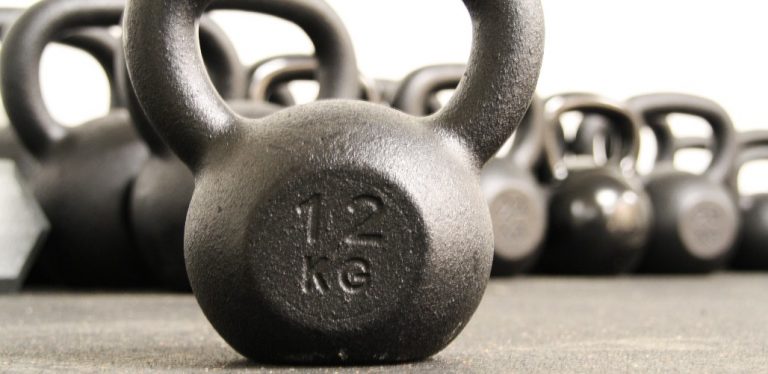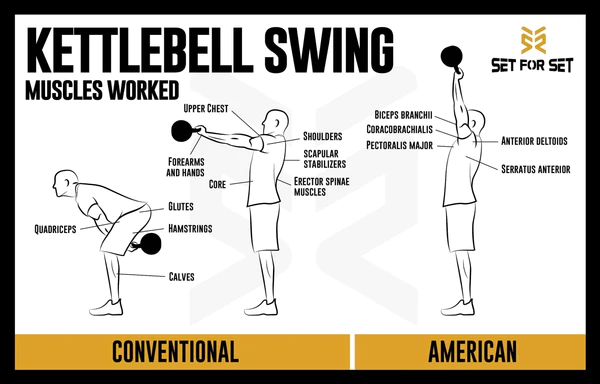What is HIFT (High Intensity Functional Training) and Is It Right For You?
If you love HIIT or HIT, but need functional fitness, HIFT may be the right combo for you. With the focus on functional combined with intensity, HIFT targets across the board for an intense but rewarding outcome. This article dives into what HIFT is, its differences from HIIT, and key resources to get started.
What is HIFT?
HIFT stands for High Intensity Functional Training, which somewhat combines high intensity interval training with functional training. This is a type of exercise program that most emphasizes multi-joint functional movements which you can modify for all levels of fitness. It generates a much greater use of your muscles than most other traditional types of exercise, particularly ones using repetitive aerobics.
The theory is that this program will improve general physical fitness, in terms of flexibility, strength and cardiovascular endurance. But its designers also expect it to result in increased measures of performance, including power, speed and agility.
It’s a fairly new type of training modality that constantly changes both the functional exercises and the duration of your activity. It doesn’t necessarily incorporate rest periods. CrossFit training is actually considered a form of this type of exercise. That’s because it’s based on the concept of increasing your abilities over a period of time while combining multiple types of exercise, such as:
Weightlifting derivatives – deadlift, shoulder press, etc.
Body weight movements – pushups, squats, etc.
Mono-structural – rowing, running, etc.
Basically, this training program’s purpose is to improve general physical fitness and performance by using different functional movements that you perform at a level of intensity that is high for you.
–
HIFT vs. HIIT
Many people think that these two types of training are pretty much the same. But that’s only because they both incorporate a high-intensity workout. However, that is a misconception. There are some very important differences between the two, and they result in very different outcomes. Mainly, it is the use of resistance-based exercises, patterns of functional movement, and rest intervals that vary.
Multimodal vs Unimodal
This is where the “Functional” part comes in. One definition of functional exercises is that they involve the whole body, like pullups, vertical jumps and more. Whereas the unimodal exercises used in HIIT would be the same types as the mono-structural exercises mentioned above. These include running, rowing, cycling and so on.
You usually do a certain number of repetitions, for a certain number of sets, in weightlifting, powerlifting and gymnastic exercises. But there is a long recovery time when you do it that way. And they don’t really generate a significant cardiovascular response, whether you do them more strenuously for shorter periods or vice versa.
However, when you do them at high intensity levels in an interval or continuous circuit format, they can powerfully stimulate not only increased muscle strength but anaerobic, aerobic and cardiovascular adaptations, as well.
Recovery Intervals
HIIT protocols typically call for periods of rest spaced out at certain points. And they are usually longer than the periods of actual exercise. But in this type of training, the rest intervals are shorter. And participants take them on an “as needed” basis throughout the exercise session. There hasn’t been nearly as much research done as there has been on HIIT. But it’s possible that the differences in rest intervals might have an impact on recovery time.
Variety
The very nature of this type of high intensity training is based on the concept of alternating the types of exercises that you do. So you can do different ones every time you go to the gym and rest whenever you feel the need to, instead of having a set schedule of exercises to perform for a certain period between rest intervals.
–
HIFT Benefits
There a number of benefits to this type of training style, but some are more significant than others when compared to other exercise programs, particularly HIIT.
Endurance, Strength and Power
Of the few studies done on this style of program, a couple of them do indicate that results definitely can differ significantly, depending upon which high intensity workout you choose.
For one thing, studies show that a high intensity functional training program to improve aerobic capacity and peak performance, as well as generate a significant change in body composition, muscle power and strength. And when directly compared to HIIT, this program improved anaerobic power 15% to HIIT’s 12%, and aerobic capacity 7% to HIIT’s 5% in a group of 28 women after 6 weeks of training.
Additionally, only the women in the group practicing high intensity functional training improved their muscular endurance, as well improved their muscle power and strength. This is probably the most important difference between the two programs. Because a great many people choose programs like weight training or a different high intensity workout in order to become stronger and more powerful. This one achieves that, plus longer endurance, as well.
Variety and Accelerated Results
Actually, any type of high intensity training will generally return results faster than other types of exercise programs. You just work harder for shorter periods of time.
However, the very nature of this particular program is to alternate a wide variety of functional, mulimodal exercises. A side benefit of this is that you won’t get bored so easily by doing the same exercises over and over again every time you go to the gym. Hopefully, this will help keep you motivated to practice it on a regular basis.
It’s More Fun
Yes, believe it or not, one study actually showed that a significant number of people who tried this particular style of exercise found it both more challenging and enjoyable than those who practiced other types of resistance exercise, whether alone, with a personal trainer or in a group.
–
Is HIFT Training Right for You?
It is certainly great for improving your overall health and fitness. But so are many other types of programs. This program will also generate a significant difference in your body composition and aerobic capabilities. But again, so will others. However, as noted above, there are a few things this one seems to do especially well.
- It helps you gain increased lean muscle mass, which in turn increases your endurance, power and strength.
- People seem to find it more challenging and fun than other types of exercise, whether alone or in a class.
- The variety may be more motivating, if you bore easily.
So if those things are of particular importance to you, then this type of training is definitely worth considering. And, of course, you should also take into consideration the look you wish to achieve, your schedule, your goals and your budget.
One more thing you might want to keep in mind is that, given the types of exercises involved in this exercise regimen, it might be wise to practice it under the supervision of a professional if you are not already familiar with them.
–
HIFT Resources to Start With
If you would like to know more, here are a few resources for you to refer to:
Definition and Research Implications for Improved Fitness
This publication is probably one of the most frequently cited in references to this type of exercise regimen. And that is because it thoroughly dissects the program, from precisely defining what constitutes a part of it to a detailed comparison to HIIT and a historical prospective. There are even sections as to how it relates to specific professions, such as athletes, firemen and law enforcement officers.
Why it’s Taking the World by Storm
This is a quick take by a professional personal trainer on what the program is and why so many people love it. Obviously, it takes the position that you must perform this program under the guidance of a professional. But it also has a little more technical detail that experienced gym rats might find interesting.
In Depth HIIT Comparison
The focus of this article is entirely on the differences between the two programs. It includes many details that go beyond the scope of this article, such as incorporating a workout of the day (WOD) into each of the programs.
This article does offer some basic definitions of the two programs. But it seems to assume that the reader is still very familiar with exercise programs in general. So beginners might find themselves at least slightly at a loss. However, it is very well-documented, with references to several well-respected publications.
Total Gym Review with 11 Great Exercises (Including HIIT)
This guide breaks down how the Total Gym compliments total body workouts. This particular type of equipment can also add great value for HIFT. While many of the exercises in the guide are targeted, there a few full body workouts that cross into the functional realm. Read the functional fitness guide to learn about some of the key functional workouts. Beyond the Total Gym, there are some key pieces of functional equipment.
–
Conclusion
Full body, or functional fitness, has long proven the value of multimodal exercises. Combining this with high intensity to create HIFT allows the benefits of both worlds. This will leave you sore, so recovery will be critical. Before starting any HIFT or exercise routine, speak to your doctor.
If HIFT does not meet your needs, evaluate the other guides for HIT or HIIT to get started. Whatever exercise you choose, from running to functional fitness, the key is consistency. Don’t worry about what others are doing; just do what works for your body… and do it regularly.
[starbox]






